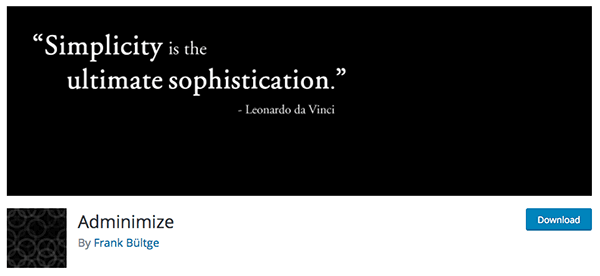Are you looking to give your website a fresh, new look? WordPress themes are the perfect solution. They offer a variety of layouts and features that can transform your site in a matter of minutes. Whether you’re starting a blog, building an e-commerce store, or showcasing your portfolio, there’s a theme that fits your needs.

Themes not only improve the esthetic appeal but also enhance the functionality of your site. You can choose from grid layouts, custom color schemes, featured images, and much more. With the right WordPress theme, you can create a web presence that truly reflects your brand.
So, let’s dive into the world of WordPress themes and discover how they can revolutionize your online space.
What are WordPress Themes?
WordPress themes play a crucial role in the design and layout of your website. They determine how your site looks to visitors and dictate the overall user experience.
In this article, we will explore what WordPress themes are and how they impact your website’s appearance.
Understanding WordPress Themes
A WordPress theme is a collection of files that work together to create your website’s visual and functional aspects. These files control how your content is presented and how your site behaves. The two essential files in a WordPress theme are:
index.php(for classic themes) orindex.html(for block themes) – This file serves as the main template for your website.style.css– This file contains the CSS code that defines the style and appearance of your theme.
While these two files are necessary, you may also find additional files in a theme’s folder, such as PHP files, HTML files, localization files, CSS files, graphics, JavaScript, and text files.
The Role of Themes in WordPress
WordPress themes are powerful tools that customize the way your website content is presented to visitors. They offer various options and functionalities, allowing you to:

- Choose different layouts: Themes provide flexibility in selecting a static or responsive layout and determining the number of columns.
- Control content placement: You can decide where specific content should appear on your website.
- Define content visibility: Themes enable you to specify which devices or actions trigger the visibility of your content.
- Customize typography and design elements: By utilizing CSS or theme.json, you can personalize your theme’s typography and design elements.
- Include media elements: Themes allow you to incorporate images, videos, and other media wherever you desire.
Themes vs. Plugins
While some features may overlap between themes and plugins, it is essential to understand the distinction between the two. Themes primarily focus on the presentation of content, whereas plugins control the behavior and functionality of your WordPress site.
To ensure the best practices for theme development, it is recommended to:
- Keep critical functionality separate: Avoid adding critical features to your theme, as users may lose access to them when they switch themes. Instead, develop separate plugins for such functionality.
- Embrace theme flexibility: By separating critical features into plugins, you allow users to change the theme’s design while retaining essential functionalities.
- Utilize plugins for site functionality: Move any functionality your site requires, even if the design changes, to a separate plugin. This ensures consistent functionality across different themes.
Finding and Choosing WordPress Themes
When searching for WordPress themes, it is crucial to prioritize quality and security. The WordPress.org Theme Directory is a safe and reliable source for downloading themes. Every theme available on this platform undergoes a thorough review process to meet strict guidelines for quality and security.
WordPress themes greatly influence your website’s overall look and feel. By understanding their purpose and capabilities, you can make informed decisions when selecting and customizing themes for your WordPress site.
Next, we will explore different types of WordPress themes and provide examples of popular themes to inspire your design choices. Stay tuned for the upcoming sections!
Benefits of Using WordPress Themes
Easy Customization
When it comes to creating a website, customization is key. WordPress themes offer an easy and convenient way to customize your site to fit your specific needs. Whether you’re a beginner or an experienced web developer, WordPress themes provide a user-friendly interface that allows you to modify various aspects of your site without any coding knowledge.
With pre-built layouts and a wide range of customization options, you can easily change colors, fonts, layouts, social icons, and more. This flexibility gives you complete control over the look and feel of your website, allowing you to create a unique online presence that reflects your brand or personal style.
Professional Look and Feel
First impressions matter, especially in the online world. With WordPress themes, you can instantly give your website a professional and polished look without hiring a designer or spending a fortune. These themes are designed by professionals who understand the importance of aesthetics and user experience.
By choosing a high-quality WordPress theme, you can benefit from clean and modern designs that are visually appealing and engaging. These themes often come with pre-built templates and elements that ensure consistency throughout your site, resulting in a cohesive and professional online presence that leaves a lasting impression on your visitors.
Responsive Design
In today’s mobile-driven world, having a responsive website is crucial. With WordPress themes, you don’t have to worry about creating a separate mobile version of your site or dealing with complex coding. These themes are built with responsive design in mind, which means your site will automatically adapt and display properly on various devices, including smartphones and tablets.
A responsive website not only improves user experience but also helps with search engine optimization (SEO). Google and other search engines prioritize mobile-friendly sites in their rankings, so using a WordPress theme with responsive design can give you an edge over your competitors and attract more organic traffic to your site.
SEO-Friendly
Speaking of SEO, WordPress themes are known for their search engine optimization capabilities. These themes are built with clean and semantic code, making it easier for search engine crawlers to understand and index your site. Additionally, many WordPress themes come with built-in SEO features and plugins, allowing you to optimize your content and improve your site’s visibility in search engine results.
By using an SEO-friendly WordPress theme, you can ensure that your site is easily discoverable by search engines, driving more organic traffic and potential customers to your website.
The benefits of using WordPress themes are undeniable. With easy customization, a professional look and feel, responsive design, and SEO-friendliness, these themes provide a solid foundation for creating a successful and visually appealing website. WordPress themes offer a cost-effective and efficient solution for building your online presence, whether you’re a small business owner, a blogger, or an entrepreneur. So why wait? Choose a WordPress theme that suits your needs and start creating your dream website today.
Related Websites:
Choosing the Right WordPress Theme
When it comes to building a new WordPress site, selecting the perfect theme is crucial. With thousands of free and premium WordPress themes available, it’s important to choose one that looks good and meets your specific needs. In this section, we’ll explore the key factors to consider when selecting a WordPress theme.
Identify Your Website’s Purpose
Before diving into the world of WordPress themes, it’s essential to identify the purpose of your website. Are you creating a blog, an e-commerce store, a portfolio site, or a corporate website? Knowing the purpose will help you narrow down your options and find a theme that aligns with your goals.
Consider what features and functionalities are essential for your website. For example, if you’re building an online store, you’ll need a theme that is compatible with popular e-commerce plugins like WooCommerce. On the other hand, if you’re creating a blog, you may prioritize themes that offer a clean and minimalist design to enhance readability.
Consider Your Target Audience
Understanding your target audience is another crucial aspect of choosing the right WordPress theme. Think about their preferences and expectations. Are they tech-savvy or more inclined towards simplicity? Do they prefer modern or traditional designs? By considering your audience, you can select a theme that resonates with them and enhances their browsing experience.
Look for Responsive and Mobile-Friendly Themes
In today’s mobile-driven world, having a responsive and mobile-friendly website is a must. More and more users are accessing websites through their smartphones and tablets, so it’s essential that your chosen theme is optimized for different screen sizes. Look for themes that are labeled as “responsive” or “mobile-friendly” to ensure your site looks great on any device.
Check for Plugin Compatibility
Plugins add extra functionality to your WordPress site, so it’s crucial to ensure that your chosen theme is compatible with the plugins you plan to use. Check the theme documentation or inquire about plugin compatibility with the developer. This way, you can avoid any conflicts or limitations that may arise when using certain plugins with your chosen theme.
Read Reviews and Ratings
Before finalizing your choice, reading reviews and ratings of the WordPress themes you are considering is always a good idea. This will give you insights into the experiences of other users and help you determine if a particular theme meets your expectations. Look for themes that have positive reviews, high ratings, and a good track record of customer satisfaction.
Remember, choosing the right WordPress theme is crucial for the success of your website. Take the time to identify your website’s purpose, consider your target audience, look for responsive and mobile-friendly themes, check for plugin compatibility, and read reviews and ratings. By following these steps, you’ll be on your way to selecting a theme that not only looks great but also meets your specific needs.
Popular WordPress Themes
Introduction
When it comes to choosing the best WordPress theme for your website, the options can be overwhelming. With thousands of free and premium themes available, making an informed decision is important.
In this section, we will explore three of the most popular WordPress themes of 2023. These themes have gained popularity due to their features, design, and overall functionality.
Theme 1: Divi
One of the most sought-after WordPress themes of 2023 is Divi. Developed by Elegant Themes, Divi offers a wide range of features that make it ideal for creating stunning websites. With its ultimate page builder, Divi allows users to create and customize their website’s layout easily.
Divi comes with a variety of pre-designed layouts for different industries and niches, making it easier for beginners to get started. The 1-click demo importer allows users to import professionally designed pages and blog layouts, which can then be customized using the frontend editor.
With the built-in drag and drop page builder, you have complete control over the design of your website. You can easily move elements, manage custom designs, and apply global styles to all pages. Divi also offers the option to add testimonials, enhancing the credibility of your website.
In addition to its user-friendly interface, Divi is highly flexible and easy to use. It is also SEO-friendly, ensuring that your website ranks well in search engine results. With its visually appealing design options and powerful features, Divi is a top choice for many website owners.
In this part, we have explored three popular WordPress themes of 2023: Divi by Elegant Themes. These themes offer a range of features, flexibility, and design options to help you create a stunning website. Whether you’re a beginner or an experienced user, these themes provide the necessary tools to bring your vision to life. Stay tuned for the next section, where we will discuss additional WordPress themes to consider for your website.
How to Install a WordPress Theme
Method 1: Install a Theme using WordPress Admin Theme Search
If you are looking to install a free WordPress theme from the WordPress.org themes directory, you can easily do so from your WordPress dashboard. Here’s how:
- Log in to your WordPress admin area.
- Go to the Appearance » Themes page and click on the Add New button.
- On the next screen, you can choose from the options like Popular, Latest, or Favorites. If you already know the theme you want to use, simply type its name into the Search themes… field.
- Clicking on Feature Filter will allow you to sort themes based on different characteristics. You can sort themes by subject, specific features, and layout.
- Based on your search, you will see a list of themes that meet your criteria. Simply hover your mouse over the theme’s image and click on the Install button.
- WordPress will now install your theme and show a success message. To start using this theme on your WordPress website, click on the Activate button.
Congratulations! You’ve successfully installed and activated your WordPress theme. Some themes may have additional settings that you need to configure, such as installing must-have WordPress plugins or customizing the theme using the built-in WordPress theme customizer.
Method 2: Install a Theme by using the Upload Method from WordPress Admin
If you have a premium theme or theme you downloaded from a third-party website, you can install it using the upload method. Here’s how:
- Log in to your WordPress admin area.
- Go to the Appearance » Themes page and click on the Add New button.
- On the next screen, click on the Upload Theme button instead of browsing the themes directory.
- Choose the theme file (in .zip format) from your computer and click on the Install Now button.
- WordPress will now upload and install the theme. Once it’s done, you can click on the Activate button to start using the theme on your website.
That’s it! You’ve successfully installed a WordPress theme using the upload method.
Remember, when installing a new theme, it’s important to keep in mind that it will change how your WordPress website looks and functions. If you’re switching from an existing theme, make sure to follow the necessary checklist of things you need to do before changing WordPress themes.
Installing a WordPress theme is essential in creating a visually appealing and functional website. By following the methods outlined above, you can easily install any WordPress theme of your choice and give your website a fresh new look.
Now that you know how to install a WordPress theme, you’re ready to move on to the next step in building your website. Stay tuned for more informative articles on WordPress themes and related topics!
Customizing Your WordPress Theme
Customizing your WordPress theme allows you to create a unique and personalized look for your website. You can ensure that your website stands out from the crowd by making changes to the theme’s colors and fonts, adding a custom logo, customizing the header and footer, and creating custom page templates. Here we will explore each of these customization options in detail.
Changing the Theme’s Colors and Fonts
One of the simplest ways to customize your WordPress theme is by changing the colors and fonts. By using the built-in theme customizer or a plugin like “Customizer Color Palette” or “Google Fonts Typography”, you can easily tweak the color scheme and font styles to match your brand’s identity.
Consider the emotional impact that different colors can have on your audience. For example, warm colors like red and orange can create a sense of urgency or excitement, while cool colors like blue and green evoke calmness or trust. Experiment with different combinations to find the perfect balance for your website.
Adding a Custom Logo
A custom logo is crucial for branding your website and making it easily recognizable. By uploading a logo image through the WordPress customizer or by using a plugin like “Logo Slider”, you can prominently display your logo at the top of your website.
Ensure your logo is clear, high-quality, and effectively represents your brand. It should be unique and memorable, leaving a lasting impression on your visitors. Consider hiring a professional designer or using online tools like Canva or Adobe Spark to create a professional-looking logo.
Customizing the Header and Footer
Your website’s header and footer sections play a significant role in its overall design and functionality. By customizing these sections, you can add important information, such as contact details or social media links, and create a cohesive look throughout your website.
Many WordPress themes offer built-in options to customize the header and footer. However, if your theme doesn’t provide sufficient customization options, you can use plugins like “Header Footer Code Manager” or “Elementor” to have more control over these areas.
Creating Custom Page Templates
Custom page templates allow you to have different layouts and designs for specific pages on your website. This is particularly useful if you want to create landing pages, showcase portfolios, or uniquely display specific types of content.
WordPress themes usually come with a set of pre-built page templates, such as a default template for blog posts and a full-width template for pages. However, you can create your own custom templates using page builders like “Beaver Builder” or “Divi Builder” to have more flexibility and creative freedom.
Customizing your WordPress theme is a powerful way to make your website truly yours. By changing the theme’s colors and fonts, adding a custom logo, customizing the header and footer, and creating custom page templates, you can create a visually appealing and cohesive online presence that reflects your brand’s identity.
Remember, customizing your WordPress theme should be a fun and creative process. Experiment with different options, seek inspiration from other websites, and don’t be afraid to try new things. With a little time and effort, you can transform your website into a unique and engaging platform that leaves a lasting impression on your visitors.
Maintaining Your WordPress Theme
Keeping Your Theme and Plugins Updated
One of the most crucial aspects of maintaining your WordPress theme is to ensure that both your theme and plugins are kept up to date. Regular updates not only enhance the functionality of your website, but they also help to address any security vulnerabilities that may exist.
Updating your theme and plugins is a simple process. When updates are available, WordPress will notify you in the dashboard. All you need to do is click the update button, and the latest version will be installed automatically. It’s important to perform these updates regularly to ensure your website runs on the most secure and efficient version.
Check out this helpful guide to learn more about updating your WordPress theme and plugins.
Regularly Backing Up Your Website
Backing up your website is an essential practice that should not be overlooked. Imagine spending hours customizing your theme and creating unique content, only to lose everything because of a technical glitch or security breach. That’s why it’s crucial to back up your website regularly.
By creating backups of your website, you can restore your site to a previous state if anything goes wrong. This can include reverting to an earlier version of your theme, recovering lost content, or fixing any issues that may have arisen.
There are several plugins available that make the backup process simple and automated. One popular option is the UpdraftPlus plugin, which allows you to schedule regular backups and store them in a secure location.
Monitoring and Addressing Security Issues
Security is a top priority when it comes to maintaining your WordPress theme. With the increasing number of cyber threats, monitoring your website for any potential security issues and taking appropriate action to address them is crucial.
Regularly scanning your website for malware and vulnerabilities can help you identify any potential security risks. Plugins like Sucuri offers comprehensive security scanning and monitoring services to keep your website safe.
In addition to scanning, it’s important to take necessary precautions to protect your website from hackers. This can include using strong passwords, limiting login attempts, and implementing a firewall.
By staying vigilant and addressing security issues promptly, you can ensure the integrity and safety of your WordPress theme.
Remember, maintaining your WordPress theme involves regularly updating your theme and plugins, backing up your website, and monitoring and addressing security issues. Following these practices can keep your website running smoothly and protect it from potential threats.
Now that you understand the importance of maintaining your WordPress theme let’s move on to the next section: optimizing your website for search engines. Stay tuned for valuable tips and tricks to improve your website’s visibility and drive more traffic.
Conclusion
Choosing the right WordPress theme for your website is vital for its success. A well-designed and optimized theme can significantly improve your site’s performance, user experience, and search engine visibility. By considering factors such as responsiveness, speed, customization options, and SEO-friendliness, you can ensure that your website stands out from the competition and attracts more visitors.
Remember, when selecting a WordPress theme, it is crucial to prioritize functionality over aesthetics. While a visually appealing design is important, it should not compromise the performance and usability of your site. Additionally, make sure that the theme is regularly updated to stay compatible with the latest WordPress version and plugins.
Furthermore, optimizing your chosen theme for search engines is essential for driving organic traffic to your site. Utilize SEO-friendly features such as clean code, schema markup, fast loading times, and mobile responsiveness to enhance your website’s visibility in search engine result pages.
Lastly, regularly monitor and analyze your website’s performance to identify any issues or areas for improvement. Stay up to date with the latest best practices in SEO and regularly update your content to ensure that your website remains relevant and competitive in the ever-evolving online landscape.
By selecting a well-designed and SEO-optimized WordPress theme, you can set your website up for success and achieve your online goals. So take your time, do thorough research, and make an informed decision that aligns with your brand and objectives. Happy WordPress theme hunting!








